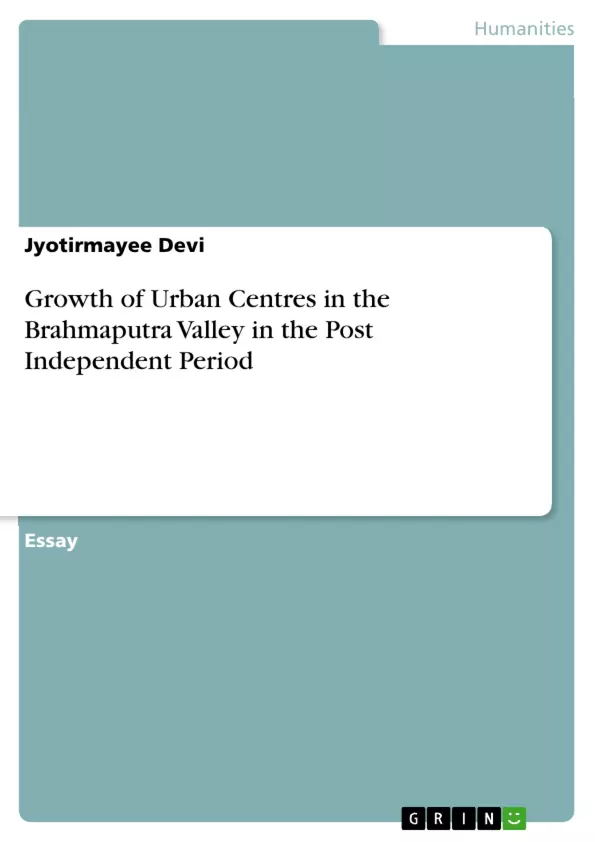This text gives a background of the growth of urban centres in Brahmaputra Valley in the period of post independence.
The Brahmaputra or Assam valley is the most important geomorphological unit of Assam. It is almost a flat featureless alluvial lowland lying on either side of the Brahmaputra river, extending from the base of Bhutan and Arunachal Himalaya in the northeast to the Indo-Bangladesh border in the west. It is about 725 km long, 80 km wide(average) and area is 58315 sq. km. The valley is characterized by distinct alluvial morphological units, predominance of rice fields, tea gardens, oil resources, very low urbanization, lack of quick transportation system and high density of population.
Inhaltsverzeichnis (Table of Contents)
- Introduction
- Historical Background of the Study area
- Pattern of Urban Growth
Zielsetzung und Themenschwerpunkte (Objectives and Key Themes)
This work examines the growth of urban centers in the Brahmaputra Valley of Assam during the post-independence period. It explores the factors driving urbanization, including economic development, demographic shifts, and government policies.
- The historical context of urbanization in the Brahmaputra Valley
- The impact of economic factors on urban growth
- The role of demographic factors in urban expansion
- The influence of government policies on urbanization
- The changing patterns of urban growth in the post-independence era
Zusammenfassung der Kapitel (Chapter Summaries)
Introduction
This chapter introduces the concept of urbanization and defines urban areas based on physical and functional criteria. It discusses the growth of urban centers and the factors contributing to urbanization, including economic, demographic, and socio-economic factors.
Historical Background of the Study area
This chapter provides a historical overview of urbanization in the Brahmaputra Valley, tracing its roots back to ancient civilizations. It highlights the role of political and administrative factors in the development of urban centers in the region.
Pattern of Urban Growth
This chapter analyzes the pattern of urban growth in the Brahmaputra Valley, focusing on the post-independence period. It examines the growth of urban population and the factors contributing to this growth, including natural increase and rural-urban migration. The chapter also discusses the impact of infrastructure development and government policies on urban expansion.
Schlüsselwörter (Keywords)
Urbanization, Brahmaputra Valley, Assam, post-independence period, economic factors, demographic factors, government policies, urban growth, historical context, infrastructure development, rural-urban migration, urban population.
- Quote paper
- Jyotirmayee Devi (Author), 2007, Growth of Urban Centres in the Brahmaputra Valley in the Post Independent Period, Munich, GRIN Verlag, https://www.grin.com/document/352078



